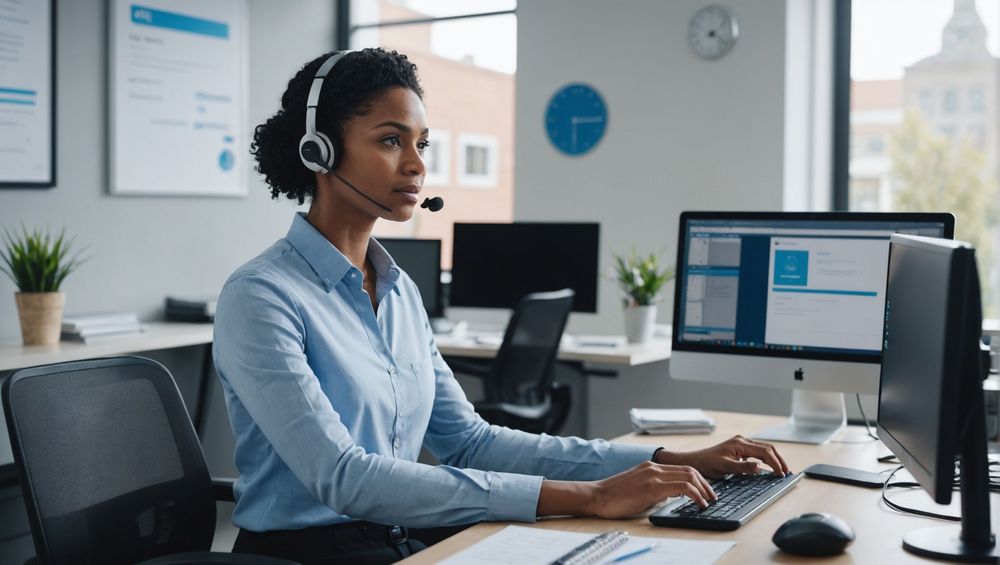
Best Practices for B2B Customer Experience
The quality of B2B customer experience (CX) can significantly impact a company’s success. In today’s competitive marketplace, providing exceptional CX is crucial for retaining clients and fostering long-term business relationships. This article explores best practices for enhancing B2B customer experiences to drive customer satisfaction and loyalty.
Understand Your Customer’s Needs

Understanding your customers’ needs is the cornerstone of delivering an exceptional B2B customer experience. To do this, businesses must engage in regular communication with their clients and gather feedback to identify pain points and areas for improvement. By actively listening to your customer’s concerns and preferences, you can tailor your products and services to meet their specific needs.
Surveys, feedback forms, and face-to-face meetings are effective methods for collecting customer insights. Additionally, utilizing customer journey mapping can help you visualize and enhance different touchpoints, ensuring a seamless experience from start to finish. Ultimately, understanding your customer’s needs helps you provide personalized and relevant solutions that drive satisfaction and loyalty.
Leverage Technology and Automation

Incorporating technology and automation into your customer service processes can significantly enhance the B2B customer experience. Advanced tools such as Customer Relationship Management (CRM) systems, chatbots, and automated email workflows ensure that client interactions are consistent, timely, and efficient. These technologies not only streamline communication but also provide valuable data insights that can inform future strategies.
For example, CRM systems can track customer interactions and preferences, allowing your team to offer personalized support and recommendations. Automated solutions can handle routine inquiries, freeing your staff to focus on more complex issues that require human intervention. By leveraging technology and automation, businesses can provide faster, more efficient service, ultimately leading to improved customer satisfaction.
Enhance Employee Training

Your employees play a crucial role in delivering exceptional B2B customer experiences. Therefore, investing in comprehensive training programs is essential. Provide your staff with the skills and knowledge they need to engage with customers effectively, handle issues promptly, and deliver solutions that meet client expectations.
Training should cover various aspects, including product knowledge, communication skills, problem-solving techniques, and the use of relevant technology tools. Regular workshops and training sessions can help keep your team updated with the latest industry trends and best practices. Ultimately, a well-trained workforce is more confident and capable of providing high-level customer support, contributing to overall customer satisfaction.
Offer Proactive Customer Support
Proactive customer support involves anticipating your client’s needs and addressing potential issues before they become significant problems. This approach can greatly enhance the B2B customer experience by demonstrating that you are attentive and committed to their success. There are several strategies for providing proactive support, including regular check-ins, predictive analytics, and offering additional resources or services.
For instance, scheduling periodic meetings to discuss project progress and any concerns shows that you are invested in your client’s success. Utilizing predictive analytics can help you identify potential issues based on previous interactions, allowing you to address them before they escalate. Additionally, offering valuable resources such as webinars, tutorials, and documentation can help clients maximize the value of your products or services. Proactive support fosters trust and reinforces your commitment to customer satisfaction.
Measure and Analyze Customer Feedback
To continuously improve your B2B customer experience, it is vital to measure and analyze customer feedback systematically. Collecting feedback from various channels such as surveys, email inquiries, and social media can provide a comprehensive view of client satisfaction and areas for improvement. By analyzing this data, you can identify trends, pinpoint specific issues, and develop actionable strategies to enhance customer experiences.
Use the following steps to effectively measure and analyze customer feedback:
- Collect Data: Gather feedback from multiple sources to capture a holistic view of customer sentiment.
- Analyze Data: Identify patterns and trends to understand common challenges and areas for improvement.
- Implement Changes: Develop action plans based on your findings to address identified issues and enhance CX.
- Monitor Progress: Continuously track the impact of implemented changes and adjust strategies as needed.
By regularly measuring and analyzing customer feedback, businesses can ensure they are meeting client expectations and continuously improving their services.
Conclusion
Delivering an exceptional B2B customer experience is essential for retaining clients and building long-term business relationships. By understanding your customer’s needs, leveraging technology, enhancing employee training, offering proactive support, and continuously measuring feedback, you can significantly improve customer satisfaction. Implementing these best practices will not only enhance the overall customer experience but also drive business success.
FAQ
1. What is B2B customer experience?
B2B customer experience refers to the overall interactions and experiences that a business client has with another business throughout their relationship. It encompasses all touchpoints, from initial contact and sales to ongoing support and services.
2. Why is improving B2B customer experience important?
Improving B2B customer experience is crucial for retaining clients, fostering trust, and building long-term business relationships. Exceptional CX leads to higher customer satisfaction, increased loyalty, and positive word-of-mouth referrals.
3. How can technology enhance B2B customer experience?
Technology can enhance B2B customer experience by streamlining communication, automating routine tasks, and providing valuable data insights. Tools such as CRM systems, chatbots, and predictive analytics enable businesses to offer personalized, efficient, and proactive support.
4. What role does employee training play in B2B customer experience?
Employee training is essential for equipping staff with the skills and knowledge to engage with clients effectively. Well-trained employees can handle customer inquiries promptly, offer personalized solutions, and contribute to overall customer satisfaction.
5. How can businesses collect and analyze customer feedback?
Businesses can collect customer feedback through surveys, email inquiries, and social media interactions. Analyzing this feedback involves identifying patterns and trends to understand customer concerns and areas for improvement. Implementing changes based on these insights can enhance the overall customer experience.